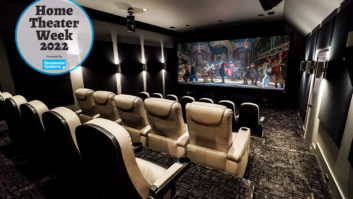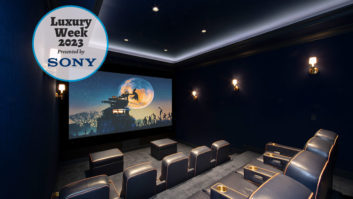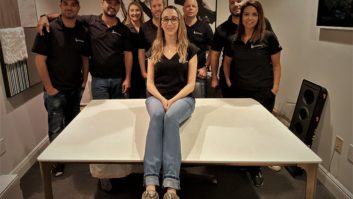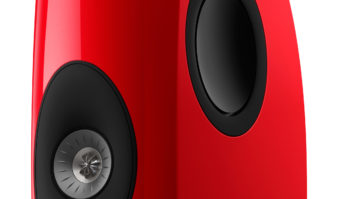HOW TO SET PARAMETERS TO RE-ENFORCE THE VALUE OF YOUR WORK
The scenario plays out like this: someone asks what you do for a living. “I design home theaters,” you say, knowing what comes next. “Oh, my uncle (or dad, or brother) has one of those; he got it at Costco,” comes the response. “What brand do you sell?”
So, what does the term “home theater” really mean? This is not a trivial question. In fact, unless professionals establish a definitive meaning, how can we demonstrate the value of our expertise? In a recent workshop delivered to home theater professionals we received answers like:
- An AV system with HDTV, surround sound, and integrated control
- A two-piece projection system and stateof- the-art surround sound audio equipment
- An AV system with HDTV, surround sound, and at least two rows of seats.
If we, the professionals, have relegated the definition to a list of equipment, how can we expect our clientele to want more? In fact,

Creating a theater like this one (designed by the author) that enables the “willing suspension of disbelief,” requires special knowledge and skill. who is helping the prospective home theater client to know what to expect?
Clearly, home theater definitions are dependant on perspective. If our client is unclear on what is possible and why it is desirable, we may never have the opportunity to do our best work. This can cut both ways. If a client believes we can work miracles with very little effort (meaning very little cost), then we will end up either falling short of their expectations or losing money. If a client does not believe there is value in the results that we can deliver, then they will always gravitate to the lowest price solution. The result of that trend is the devaluation of the specialty and ultimately, commoditization.
WILLING SUSPENSION OF DISBELIEF
In that same workshop we asked nearly 100 integrators if they were familiar with the term, “The willing suspension of disbelief.” Only one or two responded. We were surprised. When we entered the market nearly 20 years ago that phrase was regularly referred to as the goal.
Originally coined by poet and philosopher Samuel Taylor Coleridge in 1817, the phrase has since been appropriated by Hollywood and is used to describe the phenomenon in which an audience, while watching a movie, is willing to accept it as reality. Without a willing suspension of disbelief, the audience will not relate to the movie and its characters, or connect emotionally with them.
This type of experience takes knowledge and skill to produce. If our clientele understands what type of experience is possible in their home theater and is led to perceive that experience as a highly valued result, then the services of those who can deliver that experience will be in demand and highly valued. This is the position we need to be in.
COMMUNICATING THE EXPERIENCE
First, we must establish exactly what we want our clientele to perceive.

Simply put, we must establish the idea that home theater means delivering an experience that is well worth pursuing and that, if executed properly, will bring great value and enjoyment to the client and their family and friends. Here are just some of the possible attributes that clients seem to enjoy:
- A great listening experience for movies and music
- A visually stimulating picture for movies, concerts, and sports
- An environment that is compelling and draws family and friends together
- The best game environment that they have ever experienced.
Sam Cavitt (samcavitt@medesign. tv) is president of Paradise Theater, a division of Media Environment Design Inc., located in Kihei, Hawaii, and Carlsbad, California.
Because people do not respond well to being told what to think, here’s one example of how I’ve gotten my message across to clients about these points:
Often, clients will argue, “Of course I want it to sound good; that’s why I am buying all that surround equipment!” But we want them to imagine the sound experience that they will have. Paint a picture, suspend their disbelief. If, for instance, your client likes suspense movies, then describe a scene where the suspense is built through the silent anticipation of an imminent event. The subtle squeak of a shoe on wood floor from behind, for instance. This kind of description personalizes the experience. At this point your client is imagining their theater! If your client likes video games, then describe virtual reality becoming even more real in a totally.
Immersive environment. If it is music, then relate the idea of re-experiencing favorite performances and halls in their own home. These kinds of word pictures bring the client a long way into seeing the value for themselves and set the stage for establishing the value of the services that we must provide to deliver these experiences.
You can see the process here. It is an effort to communicate the wealth of the home theater experience by drawing on our client’s personal preferences.
SELLING THE EXPERIENCE
Effectively selling the home theater experience is educational in nature. Communicate the home theater experience so that each client will have an appreciation for what is available. Expose them to the possibilities so that they can raise their own expectations. Then make sure you include these professional services as part of your scope of work. Identify these as value- added services and unique qualifications of your company. If your competitors are omitting these elements, then be prepared to support their value by referring back to the education you provided your client in the start of your process.
Like so many things that are worth doing, this process of redefining “home theater” will take a concerted effort and some time. The results will be worth it. Instead of competing on price alone for items available virtually anywhere we will be helping our clientele appreciate the value for what we are capable of doing better than anyone else. Additionally, we will be developing capabilities and a marketable service which can be offered to the luxury market. Not a bad idea in the current economic climate.







